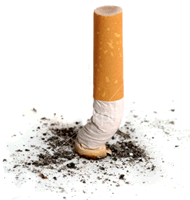By
Liz Highleyman
 Fatai
Fehintola and colleagues evaluated associations between "substance related
disorders," atazanavir trough levels, HIV viral load, and CD4 cell count
in 67 HIV positive individuals in 4 U.S.
cities (the Bronx; Rochester, NY; Cleveland; and Miami) -- 32 with and 35 without
substance use disorders -- who were on stable atazanavir-containing antiretroviral
regimens for more than 2 years.
Fatai
Fehintola and colleagues evaluated associations between "substance related
disorders," atazanavir trough levels, HIV viral load, and CD4 cell count
in 67 HIV positive individuals in 4 U.S.
cities (the Bronx; Rochester, NY; Cleveland; and Miami) -- 32 with and 35 without
substance use disorders -- who were on stable atazanavir-containing antiretroviral
regimens for more than 2 years.
As
background, the researchers noted that atazanavir is a substrate and inhibitor
of the liver enzyme CYP3A, and therefore other substances processed by this same
enzyme may interact with atazanavir, leading to altered drug levels.
Among
the study participants, 49% reported using tobacco, 28% used alcohol, 19% used
opiates/opioids, 18% used marijuana, and 10% used cocaine. Just over 40% used
multiple substances. Demographic characteristics (about 60% men, mean age 46 years)
and disease-related parameters (mean CD4 count about 450 cells/mm3, 25% HIV/HCV
coinfected) did not differ significantly between substance users and non-users.
Results
 | Significant
reductions in atazanavir trough concentrations were observed in patients who used
tobacco and/or marijuana. |
 | A
large proportion of patients with substance use disorders had atazanavir trough
levels below the therapeutic range, including 50% of tobacco users and 36% of
marijuana users. |
 | Median
atazanavir trough concentrations according to substance use were as follows: |
 |  | Tobacco:
0.314 mcg/mL in users vs 0.957 mcg/mL in non-users (P = 0.009); |  | Marijuana:
0.238 mcg/mL vs 0.593 mcg/mL, respectively (P = 0.030); |  | Alcohol:
0.534 mcg/mL vs 0.558 mcg/mL, respectively (P = 0.597, non-significant); |  | Cocaine:
0.768 mcg/mL vs 0.544 mcg/mL, respectively (P = 0.920, non-significant); |  | Opiates/opioids:
0.325 vs 0.712 mcg/mL, respectively (P = 0.220, non-significant). |
|
 | However,
substance use had no significant direct effects on HIV viral load or CD4 cell
count. |
"Tobacco
and marijuana use are associated with significantly low atazanavir trough concentrations,"
the researchers concluded. They further noted that the extent of tobacco and marijuana
use was inversely related to atazanavir levels.
The
researchers added that the cause of this association remains to be determined,
but CYP3A induction may play a role. This study did not specifically look at adherence,
which some prior research has shown to be influenced by substance use.
Another
limitation of this study is that it did not distinguish between boosted and unboosted
atazanavir; boosting may raise blood levels enough to overcome concentration differences
related to substance use.
Univ.
at Buffalo, Buffalo, NY; Univ. of Ibadan, Ibadan, Nigeria; Montefiore Med. Ctr.,
Bronx, NY; Univ. of Rochester, Rochester, NY; Univ. of Miami, Miami, FL; Case
Western Reserve Univ, Cleveland, OH.
9/15/09
Reference
Q
Ma, F Fehintola, B Zingman, and others. Tobacco and Marijuana Uses Significantly
Decrease Atazanavir (ATV) Trough Concentrations in HIV-Infected Individuals. 49th
Interscience Conference on Antimicrobial Agents and Chemotherapy (ICAAC 2009).
San Francisco. September 12-15, 2009. Abstract H-231.